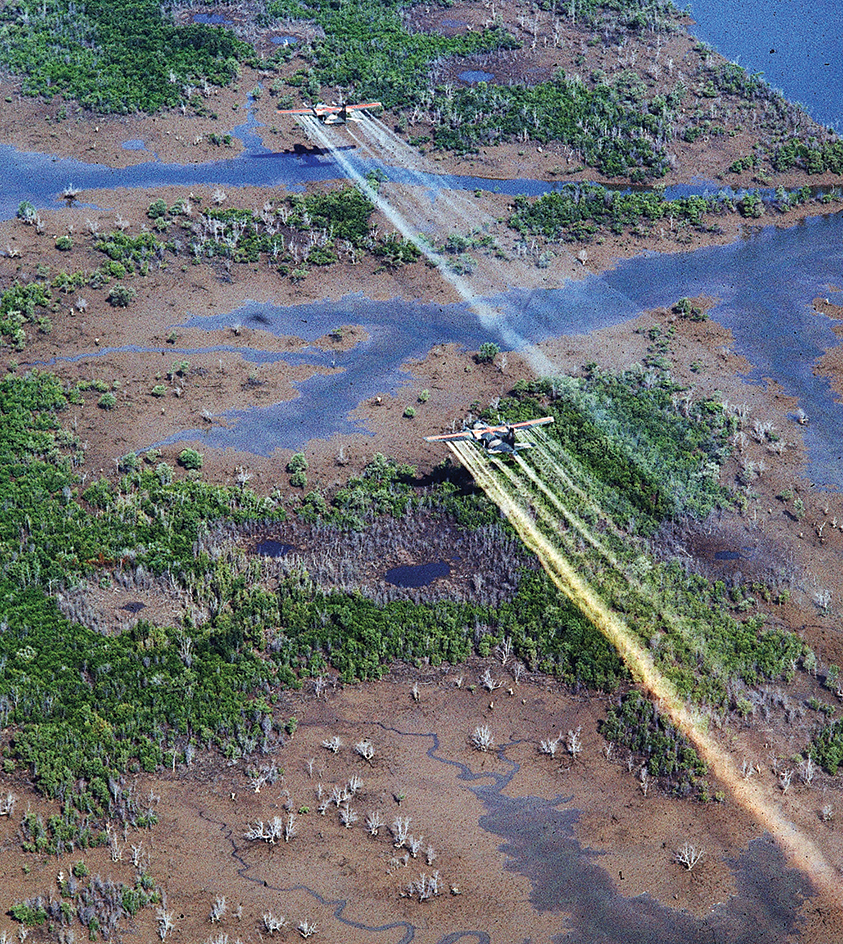Agent Orange is the military code name for a plant-killing chemical used by the United States during the Vietnam War (1957-1975). In the 1960’s and early 1970’s, the United States armed forces sprayed Agent Orange over jungles and farms in South Vietnam and Laos. Agent Orange was used to defoliate (cause the leaves to fall off) trees, shrubs, and other plants. The spraying revealed enemy hiding places and destroyed food crops.

Agent Orange consisted of mainly two plant-killing compounds called 2,4-D and 2,4,5-T. It also contained a type of compound called a dioxin. Some veterans of the war blamed Agent Orange for health problems. In 1990, the Centers for Disease Control (now the Centers for Disease Control and Prevention), a U.S. government agency, released a study of Agent Orange. The study found no evidence that Agent Orange increased the risk of cancer among Vietnam veterans. That same year, a congressional committee declared the study flawed. In 1991, Congress passed a bill providing disability benefits for Vietnam veterans suffering from certain illnesses believed caused by Agent Orange. See Dioxin .
In 1993, the Institute of Medicine (now the National Academy of Medicine), an adviser to the U.S. government, released another study of Agent Orange. It linked exposure to Agent Orange to three kinds of cancer and two skin diseases. The study reached these conclusions based on civilians’ exposure on the job. It recommended additional studies to determine the effects of Agent Orange on veterans.
